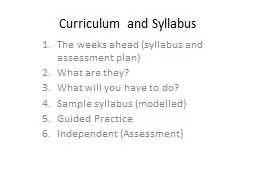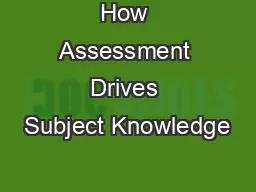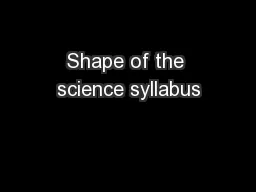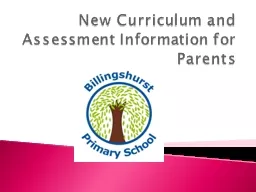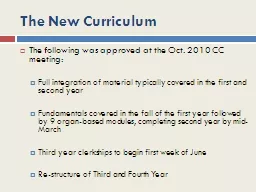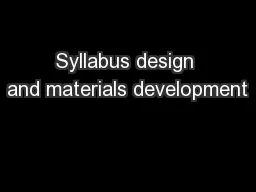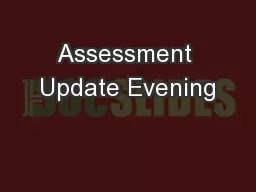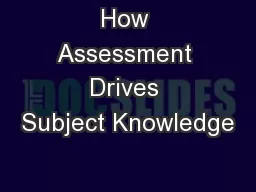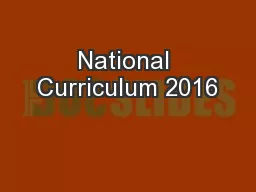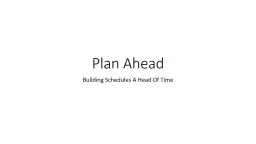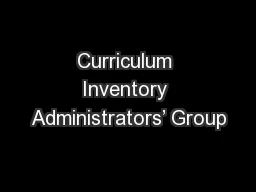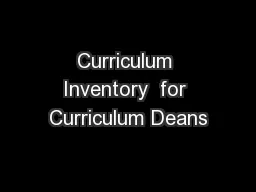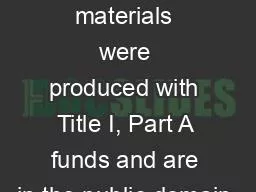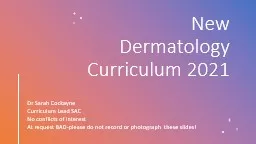PPT-Curriculum and Syllabus The weeks ahead (syllabus and assessment plan)
Author : faustina-dinatale | Published Date : 2018-02-26
What are they What will you have to do Sample syllabus modelled Guided Practice Independent Assessment Date Lesson Obj Assessment 15 May Syllabus Planning and writing
Presentation Embed Code
Download Presentation
Download Presentation The PPT/PDF document "Curriculum and Syllabus The weeks ahead ..." is the property of its rightful owner. Permission is granted to download and print the materials on this website for personal, non-commercial use only, and to display it on your personal computer provided you do not modify the materials and that you retain all copyright notices contained in the materials. By downloading content from our website, you accept the terms of this agreement.
Curriculum and Syllabus The weeks ahead (syllabus and assessment plan): Transcript
Download Rules Of Document
"Curriculum and Syllabus The weeks ahead (syllabus and assessment plan)"The content belongs to its owner. You may download and print it for personal use, without modification, and keep all copyright notices. By downloading, you agree to these terms.
Related Documents

